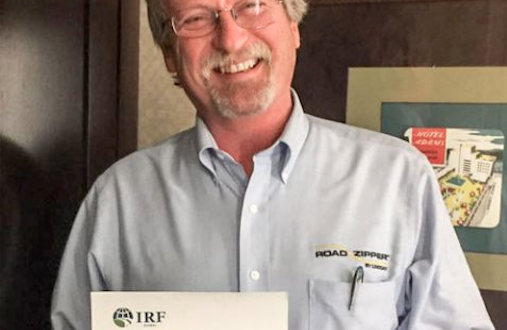Mainstreaming Road Safety in Transportation Projects
February 2017
The International Road Federation (IRF) affirms the essential role of road safety audits, and calls on multilateral institutions to introduce qualitative benchmarks and capacity strengthening programs to ensure countries progress towards a safe and forgiving road system.
Preventive risk assessment measures, such as a road safety audit or inspection, carried out on new and existing roads offer a well-charted and cost-effective pathway to reducing road traffic injury risk, because design standards alone cannot guarantee road safety in all conditions1.
Road safety audit and inspections serve the common purpose of identifying risk factors related to road design or traffic control that may lead to crashes, or make crashes more severe. In many cases, they also assist network highway operators and city traffic departments in identifying engineering weaknesses and hazardous locations, even in the absence of robust traffic injury data.
Road safety audit and inspections can have significant economic benefits: it is not unusual for seventy-five percent of the recommendations made in a typical road safety audit to have a Benefit Cost Ratio (BCR) greater than ten, and for ninety percent of the recommendations to have a BCR greater than one2. The rates of acceptance of the auditor’s recommendations are usually significantly above 50%, and they are higher when carried out in the first audit phases (feasibility, pre-design)1.
In 2015, 82.5% of countries reported implementing one or more risk assessment measure3, yet over 70% of roads surveyed by the International Road Assessment Program (iRAP) in emerging countries were rated 2 stars or under across at least one user category4. These figures suggest a startling disconnect between the theoretical merits of preventive risk assessment and the actual results experienced by countless road users every day.
Adopting a Common Definition for Road Safety Audits
Road safety audits and inspections are a formal safety performance examination of an existing or future road or intersection by an independent, multidisciplinary team. They qualitatively estimate and report on potential road safety issues, and identify opportunities for improvements in safety for all road users5 . The process follows well identified steps that involve the auditing/inspection team, the design team and the project owner, and can applied universally across different project and traffic environments. By contrast, poorly performed or badly documented road safety audits and inspections can have negative effects on safety.
Worse yet, the road authority would be using its limited financial resources to conduct these audits with less than acceptable results. Scaling up Global Commitment In August 2016, the World Bank published an updated Environmental and Social Framework providing new traffic safety safeguards applicable to all loans and grants with road construction component, including “a road safety assessment for each phase of the project”.
With this move, the World Bank joins a cohort of international financial institutions that includes the EBRD, the EIB and CAF which already mandate safety audits as part of their lending operations in the transport sector. In releasing these new lending guidelines, the World Bank noted that an intensive preparation and training period was required to prepare for the transition to the new framework6 . The ultimate goal is to use qualified, locally drawn expertise to conduct these audits and/or inspections wherever possible.
Thus, what is learned by a road authority on one road safety audit or inspection can be applied to other similar locations within the network. However, few borrowing countries have established in-country professional qualification programs delivered by accredited institutes or invested in developing commensurate knowledge resources on cost-effective and locally applicable engineering solutions.
REFERENCE
(1) OECD/ITF (2015) research report (2015) Road Infrastructure Safety Management
(2) Austroads (2002) Evaluation of Proposed Actions Emanating from Road Safety Audits (3) WHO (2015) Global Road Safety Status Report
(4) iRAP (2015) A World Free of High Risk Roads (5) US Federal Highway Administration, Office of Safety Programs (6) “World Bank Board Approves New Environmental and Social Framework”, August 4, 2016
 ..:: AUTO REPORT AFRICA ::..
..:: AUTO REPORT AFRICA ::..




